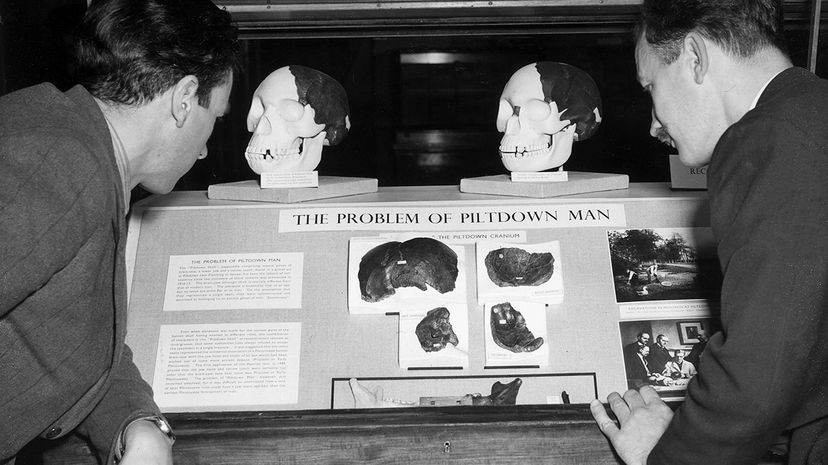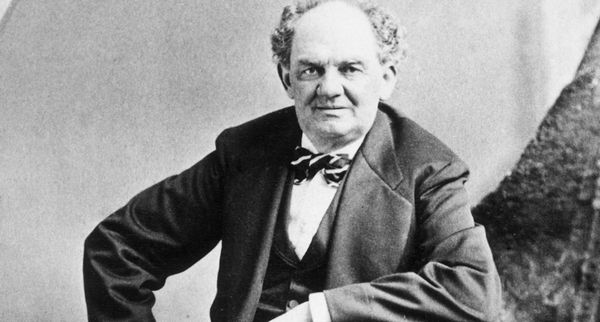
Unearthing and studying bones and fossils is one of the many ways scientists work to better understand humanity's shared history and evolution. But some discoveries have created more questions than answers. Could these abnormal archaeological finds be evidence of extraterrestrial life? The missing evolutionary link between man and ape? Proof of alien-human hybrids? Or are they just elaborate hoaxes?
Stuff They Don't Want You To Know hosts Matt Frederick, Ben Bowlin and Noel Brown dig deep into the Strange World of Inexplicable Skeletons to separate the myths from the mysteries in this episode of the podcast.
Advertisement
It would be easy to dismiss all these remarkable discoveries as nothing but hoaxes for money or fame, mainly because they've happened so many times. Most famously, the Piltdown Man, discovered by amateur archaeologist Charles Dawson in 1912, was touted as being the missing link between man and ape. Its skull, supposedly 500,000 years old, was shaped like an orangutan's, but its teeth and jawbone were closer to a human's. It wasn't until 1949 that the Piltdown Man skull was re-tested using newer techniques and found to be a fake. It was created from an artificially aged orangutan skull whose teeth had been filed down.
Another famous hoax involved a crystal skull owned by Anna Mitchell-Hughes, who claimed to have discovered it in a Mayan ruin with her explorer father, while searching for the lost city of Atlantis. (It's always the last place you look.) Mitchell-Hughes said the Mayans told her the skull was used to transfer the knowledge of an elder to a younger member of the tribe before the elder died. However, it was discovered fairly quickly that Mitchell-Hughes had simply bought the skull at an auction at Sotheby's, and according to experts, crystal skulls are usually no more than 150 years in age, made with modern tools and techniques not found in ancient civilizations.
The Fiji, or Feejee, Mermaid made quite a splash when it was exhibited in New York in 1842 by Dr. J. Griffith. But it, too, turned out to be fake, orchestrated by the greatest showman himself, P.T. Barnum. The "mermaid" turned out to be the top half of a monkey attached to a fishtail, and "Dr." Griffith was simply Barnum's accomplice. Quite a bit of ticket money was made before the two men's secret was out.
But some skeletons are obviously real, and puzzling enough to require further investigation. In 1999, the now-late paranormal researcher Lloyd Pye claimed he obtained a human-alien hybrid skeleton he called "Starchild," which was found in 1930 in a tunnel southwest of Chihuahua, Mexico. The skull was larger than average and flattened on the back, leading Pye to surmise it was the offspring of an alien and a human female. (Quite a leap.) But DNA evidence has since proven the skull is from a human, and most likely that of a child who died from congenital hydrocephalus, a condition that causes the brain to swell.
Similarly, the Paracas skulls were seen as proof of aliens among us; the skulls were elongated, like cones, and were originally reported as having mutations not found in any human species. Further testing found that they also were human, despite their appearance. More likely, the elongated shape was the result of a tribal practice called artificial cranial deformation, which was done for a variety of cultural reasons.
Perhaps most puzzling of all is the 6-inch-long (15-centimeter-) skeleton found in the Atacama Desert in Chile in 2003. It is a fully-formed human, only miniature, leading many to believe that it's a fetus or a very young child. But tests on the bones have shown growth plates similar to those of a 6- to 8-year-old child, and there appear to be mature teeth in its mouth. How could a 6-year-old only be 6 inches long? And what about the Kyshtym dwarf, the Littlemore Priory and the Peruvian three-fingered mummy? You'll have to listen to the entire podcast to find out all about these.
Advertisement


